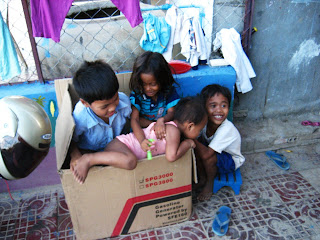When I left SE Asia, I promised myself that I wouldn´t take another twelve hour night bus. Well, promise has been kept as Argentine distances tend to be between 16-23 hours! Anyway, it´s been just over two weeks, and I can´t believe how fast time is flying. I´ve been having a great time meeting people and enjoying the cities and the countryside. Here are a few quick notes about the cities I´ve been to so far:
Buenos Aires: Really big. I stayed at Palermo House Hostal and met a lot of Americans, so much so that I felt the need to leave BA pretty quickly, despite how cool and awesome they were (two studying in Chile, one who works a diamond mine in Sierra Leone, one creative director, etc). Regardlessm I needed to feel in Argentina so I left after two or three days. The hostel workers were really nice and had a lot of good advice on Tango clubs, etc - very much a party hostel.
Anyway, La Boca district is fairly touristy and pretty beautiful. It doesn´t seem dangerous, but it is. Most of BA´s theft tends to happen there. The cemetary in Recoleta is a lot bigger than it seems and includes many of Argentina´s wealthiest dead. Saw the madres in the Plaza Mayor in front of the Casa Rosada. They march every Thursday at 3pm.
I think my favorite part of my brief stay in BA was the art museums. My god is Argentine modern art purely amazing! MALBA and Museo de Belles Artes were just incredible. The first is discounted every Weds. and the latter is free. I´ll probably go back there and write some art-inspired poetry. I think I could stare at those pieces all day long.
Puerto de Iguazu: Wow! Beautiful waterfalls, totally worth the 20hr bus ride. I met an Aussie girl who had spent the last 6 months traveling around South America. She´s only 18 and hasn´t even started Uni yet, a very bright and lively chica. Anyway, the two of us romped around the national park, taking snacks and a bunch of photos. Buses to the cataratas were only about 15 pesos ida y vuelto and the second day to the falls garners a 50% discount.
The first day at the falls there was a butterfly who landed on my arm and stayed with me for over half an hour. I named him Eduardo the Butterfly. Other animals included coati (racoon-like creatures), condors, iguanas and little lizards, and birds. Loved it, especially the Sendero Macuco and Isla San Martin.
La Garganta del Diablo wasn´t all that impressive after seeing everything else, but damn there´s a lot of water. I read somewhere that in the 1930s you could pay a local boater to row out to the top of La Garganta and row rapidly against the extreme current for a unique and highly dangerous photo opp, but after the death of one boater and six German tourists, the adventure was deemed illegal and thus no longer exists.
Córdoba: Here I met up with my long-time friend, Nelson (yes, there exists an Argentinine named Nelson). We had met four years ago, more or less randomly, in BCN. Ask me later for the story. I stayed with his family in Villa Allende just outside the city. One day we went to the campo where I met Minda del campo, the man who takes care of Nelson´s family´s acres of farmland and animals. He´s, to put it in one word, awesome. An old man full of life and energy, laughing at us crazy gringos that come to say hello to him and share some bizcocho and maté. He really liked me, the hugely tall american girl. I´ll post pics of him on Facebook later.
The following day we went to Alta Gracia to see Ché Guevarra´s first home. Not terribly interesting except a quote that says, ¨Leer y escribir es andar¨meaning To read and write is to walk. Love it. That and apparently Castro and Chavez visited in 2006... woo. Oh el comunismo.
More later on Mendoza and Chile.











